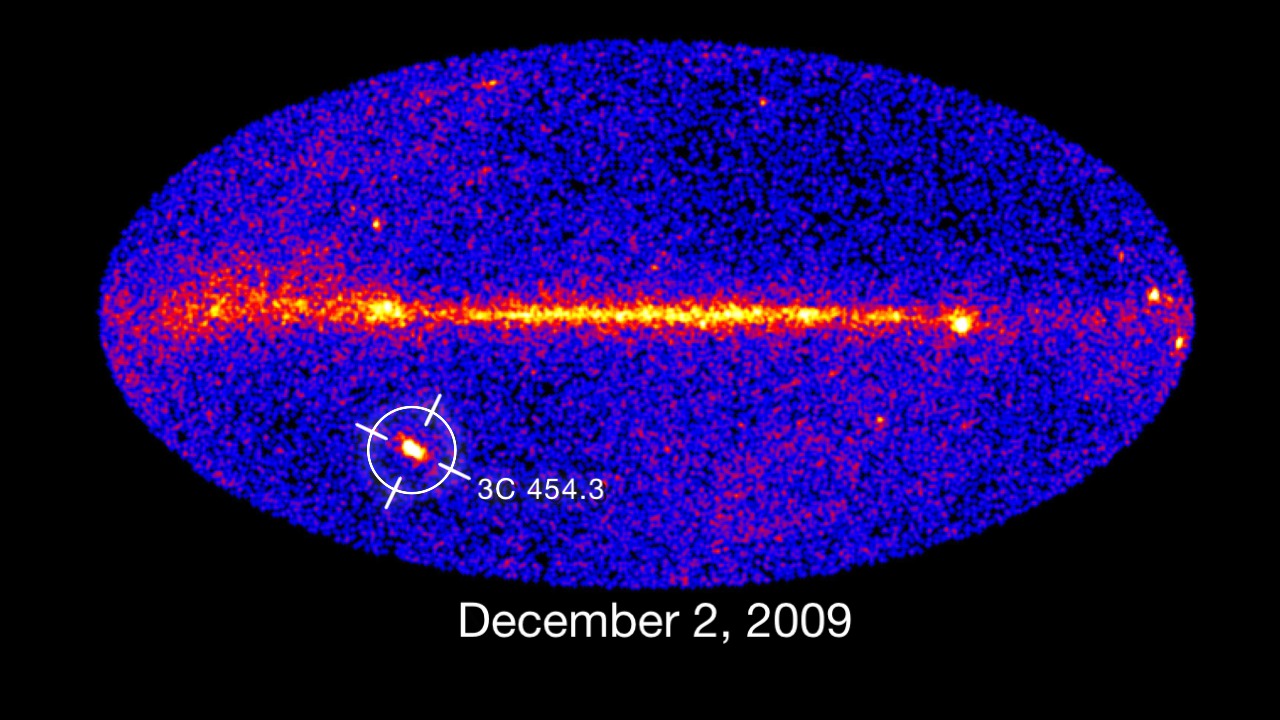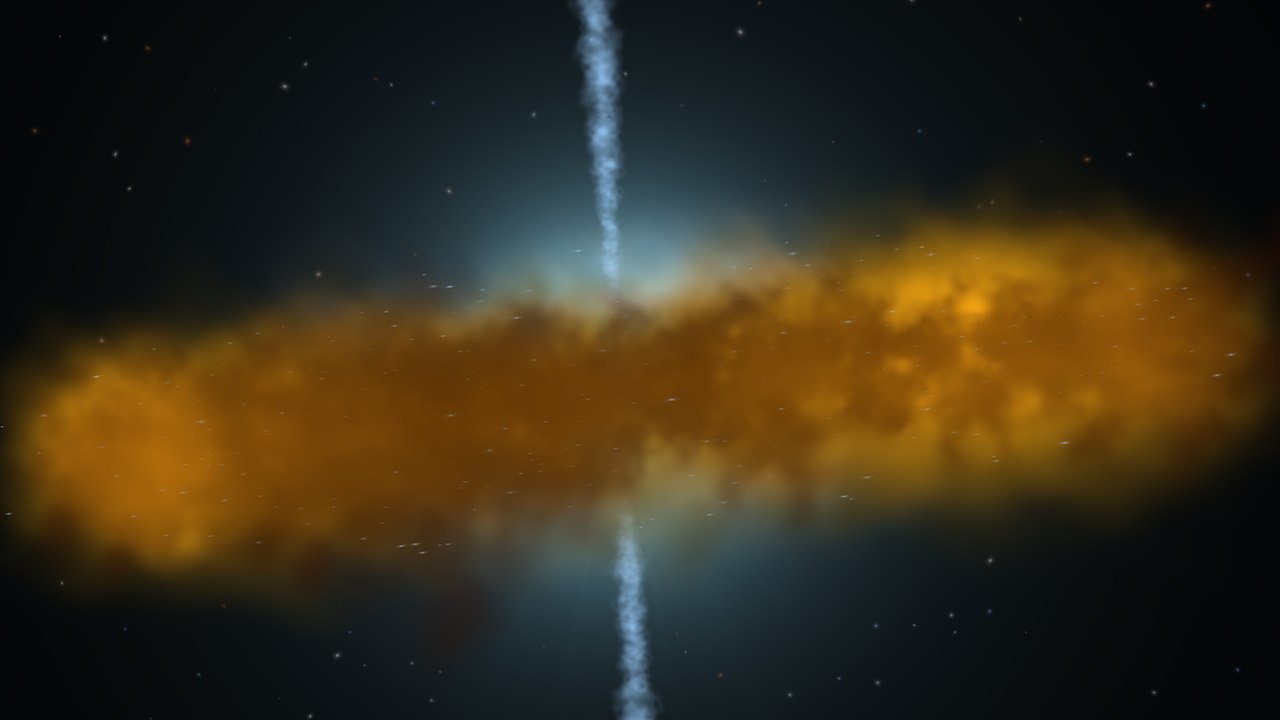Black Hole 'Batteries' Keep Blazars Going and Going
Astronomers studying two classes of black-hole-powered galaxies monitored by NASA's Fermi Gamma-ray Space Telescope have found evidence that they represent different sides of the same cosmic coin. By unraveling how these objects, called blazars, are distributed throughout the universe, the scientists suggest that apparently distinctive properties defining each class more likely reflect a change in the way the galaxies extract energy from their central black holes.
Active galaxies possess extraordinarily luminous cores powered by black holes containing millions or even billions of times the mass of the sun. As gas falls toward these supermassive black holes, it settles into an accretion disk and heats up. Near the brink of the black hole, through processes not yet well understood, some of the gas blasts out of the disk in jets moving in opposite directions at nearly the speed of light. Blazars are the highest-energy type of active galaxy and emit light across the spectrum, from radio to gamma rays. Astronomers think blazars appear so intense because they happen to tip our way, bringing one jet nearly into our line of sight.
Astronomers have identified two models in the blazar line. One, known as flat-spectrum radio quasars (FSRQs), show strong emission from an active accretion disk, much higher luminosities, smaller black hole masses and lower particle acceleration in the jets. The other, called BL Lacs, are totally dominated by the jet emission, with the jet particles reaching much higher energy and the accretion disk emission either weak or absent.
Large galaxies grew out of collisions and mergers with many smaller galaxies, and this process occurs with greater frequency as we look back in time. These collisions provided plentiful gas to the growing galaxy and kept the gas stirred up so it could more easily reach the central black hole, where it piled up into a vast, hot, and bright accretion disk like those seen in "gas-guzzling" FSRQs. Some of the gas near the hole powers a jet while the rest falls in and gradually increases the black hole's spin.
As the universe expands and the density of galaxies decreases, so do galaxy collisions and the fresh supply of gas they provide to the black hole. The accretion disk becomes depleted over time, but what's left is orbiting a faster-spinning and more massive black hole. These properties allow BL Lac objects to maintain a powerful jet even though relatively meager amounts of material are spiraling toward the black hole.
In effect, the energy of accretion from the galaxy's days as an FSRQ becomes stored in the increasing rotation and mass of its black hole, which acts much like a battery. When the gas-rich accretion disk all but disappears, the blazar taps into the black hole's stored energy that, despite a lower accretion rate, allows it to continue operating its particle jet and producing high-energy emissions as a BL Lac object.
What astronomers once thought were two blazar families may in fact be one, as shown in this artist's concept. Energy stored in the black hole during its salad days of intense accretion may later be tapped by the blazar to continue its high-energy emissions long after this gas has been depleted.

Artist's concept of BL Lac object.
For More Information
Credits
Please give credit for this item to:
NASA's Goddard Space Flight Center
-
Animator
- Scott Wiessinger (USRA)
-
Producer
- Scott Wiessinger (USRA)
-
Writer
- Francis Reddy (Syneren Technologies)
Release date
This page was originally published on Tuesday, June 10, 2014.
This page was last updated on Wednesday, May 3, 2023 at 1:50 PM EDT.

